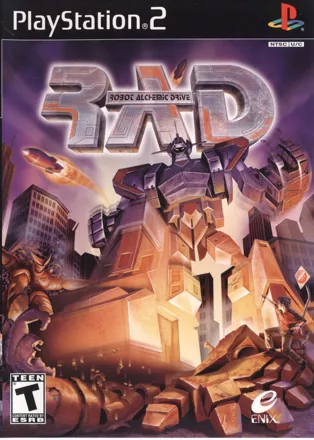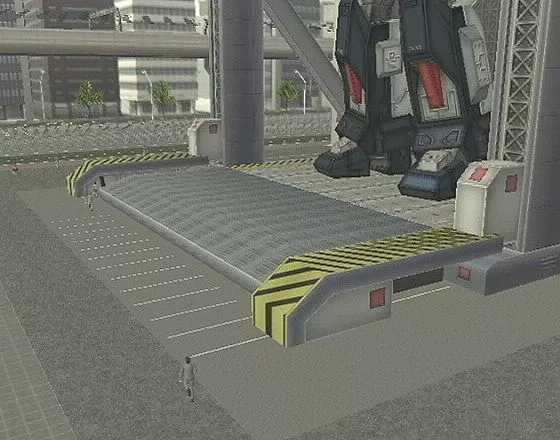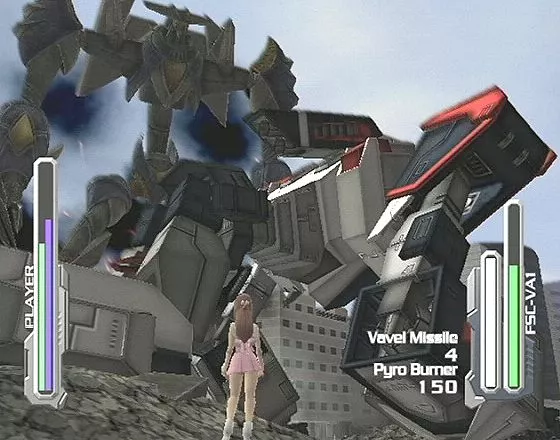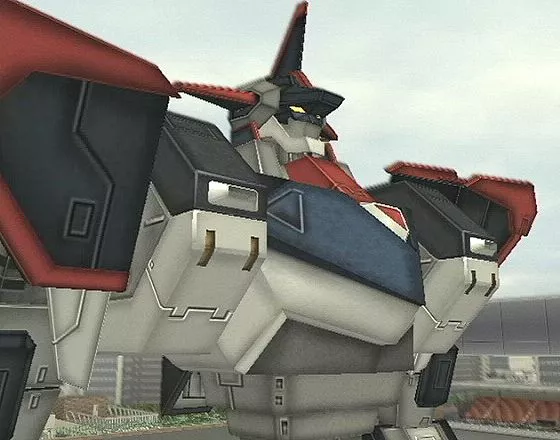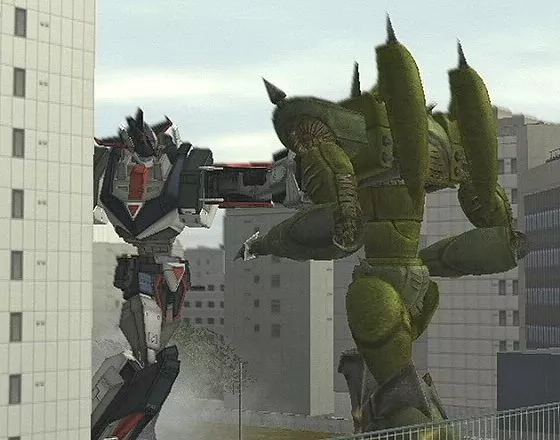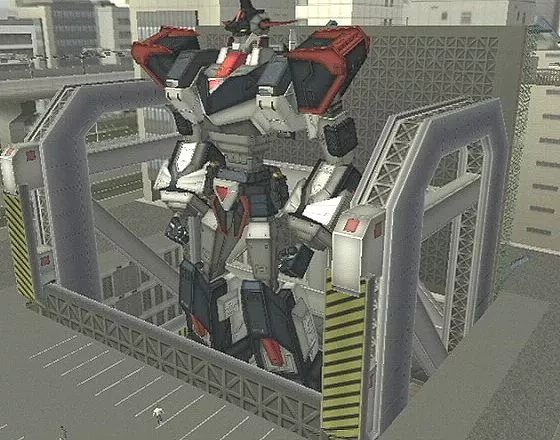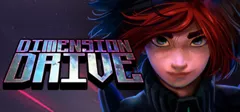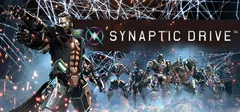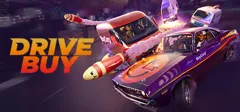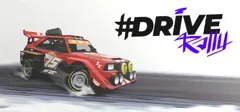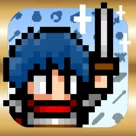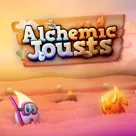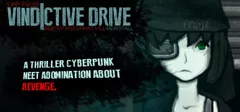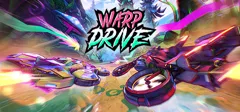Description
Robot Alchemic Drive, or commonly known as RAD, is a Big Robot / Monster fight in a modern city with a twist. There is a story mode / training mode and a 2 player vs mode. In a nut shell, alien’s attack the last city on earth. The big robot comes up, and here is where the twist come in, you have to control the robot from the perspective of the “hero” (three to choose from) and you can switch between the robot / hero mode. This forces you to make sure you have a strategic position to move the hero around in the city to see the battle without getting too close. As the game goes on you have the option to update/customize the mech(s) to improve them. You can end up destroying whole building / terrain as you battle the alien monster.
Spellings
- ギガンティック ドライブ - Japanese spelling
Groups +
Promos
Credits (PlayStation 2 version)
137 People (125 developers, 12 thanks) · View all
| Hero #1 | |
| Hero #2 | |
| Hero #3 | |
| Dr. Herman Wiltz | |
| Ellen Bulnose | |
| Nanao Misaki | |
| Keiko Konan | |
| Tomoe Kawasaki | |
| Mika Banahara | |
| Souya Hourai | |
| Masaru Misaki | |
| Saki Kyono | |
| Captain Kurosugi | |
| Private Yamano | |
| Dr. Hourai | |
| Kyoji Otawara | |
| Scenario | |
| Director | |
| Art Director | |
| Programmers | |
| Robo Modeller | |
| Motion Designer | |
| Map Modeller | |
| [ full credits ] | |
Reviews
Critics
Average score: 82% (based on 8 ratings)
Players
Average score: 4.1 out of 5 (based on 4 ratings with 1 reviews)
A unique and very fun giant robot game with plenty of flaws as well
The Good
You might know the Japanese developer Sandlot from their Earth Defense Force series about shooting giant ants but they're also the creators of a very specific type of giant robot games. Taking inspiration from the 1956 manga by Mitsuteru Yokoyama "Tetsujin 28-go" (released abroad as Gigantor), here you control a character, who in turn controls a giant robot via remote. It all started with the PlayStation game Remote Control Dandy back when Sandlot was still part of the now defunct Human Entertainment. Robot Alchemic Drive (RAD from now on) is the first official Sandlot game and the only one of it's kind that got released abroad. Unfortunately it came out just a few days after Vice City in the US so it mostly went unnoticed.
The sense of scale is very impressive, you're a small human controlling a gigantic robot (called Meganite in-game). Plus, all the buildings are completely destroyable - the entire city is your battlefield. But what really makes this game unique is the remote control thing. There's hundreds of giant robot games out there but only a handful that are controlled by remote. You can control either the Meganite or the hero but not both at once. All the action takes place from the hero's viewpoint. You can position the hero wherever you want - on top of buildings, down on the ground or even on your Meganite's shoulder. This brings a totally different dimension to the table as you need to maintain a safe position for your character at the same time have a good enough vantage point so that your Meganite's attacks actually connect.
Though the control-scheme may seem complex at first it's actually very intuitive and allows for full control over every aspect of the Meganite: shoulder buttons control the legs, the arms are controlled with the two analog sticks, L3 and R3 buttons activate arm sub-weapons such as drills and hammers, torso is controlled by the d-pad, and the face buttons are used to transform and fire the projectile weapons like rockets and lasers. Still if you find it too complex there's also an easy mode with more traditional controls. There's quite a bunch of moves and attacks available, from basic jab, straight, chop, uppercut and hook to throws, rocket fists, flamethrowers, drills, lasers, missiles and different charged moves. All in all, combat feels immensely satisfying.
There's a choice of 3 different characters: two male (Naoto and Ryo) and one female (Yui). And even though the choice is largely cosmetic, there are few differences story wise. For example, if you choose the guys Ellen is their former fiancee while in Yui's scenario she's her closest friend. There's also three Meganites to choose from, each very distinctive and has its own unique arsenal of weaponry and special attacks. Laguiole is the fastest of the bunch and can transform into a plane, but also has the weakest armor and punches. Gllang is the most powerful and can transform into a mobile fortress (a tank, basically) but is also the slowest. And finally posterbot Vavel is the most balanced and traditional one and though it can't transform it has two modes which increase its offensive power but only for 3 minutes. The difficulty largely depends on which Meganite you select, for example, some fights will be rather easy with Laguiole because of its high mobility while with the slow Gllang you're going to have your hands full in some missions against faster opposition. Also, a couple missions change depending on which Meganite you chose at the start of the game. Plus there's multiple endings mostly depending on which and how many times you destroy certain buildings during missions so RAD's replay value certainly is very good.
Here comes the most controversial part of this review because most people would put the voice acting under the bad and understandably so - objectively it is pretty terrible. But for me the pure cheesiness of it... intentional parody or not, it was hard not to laugh. I think it suits a game about giant robots rather well, in B-movie or anime dub from the 70s and early 80s kind of way. Michael Teppner as Dr. Wiltz is absolutely killing with the goofy German accent, the really Japanese-y news reporter Mika Banhara (voiced by Satoko Iwahara) and her broken English is pretty hilarious as well and Nanao's "Robots kill people. A robot killed Grandma..." is just pure classic. Then you have some more minor characters such as Captain Hayakawa who talks with a very southern accent, yeehaw... scummy businessman, whiny JSDF tank guy and plenty of others provide funny moments throughout the game. Still if you find the English voice acting unbearable get hold of an Undub version by Mugi from the internet which replaces the voices with original Japanese dub from Gigantic Drive.
There are 53 episodes in total and most are about battling the alien robots Volgara. The game does keep it interesting by introducing other objectives like protect certain buildings, tanks, news helicopter/van, destroy jamming signals or satellite machines, stay on high places because of deadly gas close to the ground or put out a fire. Saving certain buildings will earn you money that you can spend on new parts and moves for your Meganite, as well as gear for the hero to increase running and flying abilities.
Versus mode is fantastic fun for two players, here you get to play as all 15 enemy types from the story mode, including the Godzilla-like Dantarion. But what really makes it great is that there's more than one way to win: beating your opponent's robot, stepping on the opponent's "controller" or finding the other player and blowing him/her up with grenades.
The Bad
The cutscenes are just static pictures (visual novel style) where the mouths don't even move. Also, when a cutscene occurs mid-game the hero stops while the world around him/her keeps going. These mid battle conversations can get rather annoying. Especially when they give the enemy time to get up after a hard hit or even fire at you (the last enemy Asmodeus and it's Ether Cannon). Or when you're controlling the hero and trying to fly from one roof to another and they call you while you're in the middle of the flight making you fall all the way to the ground level... urgh. Likewise, the BNN news reports after most episodes are repetitively dull as all they give you is a run down of how much damage was caused to the city and which of the story specific buildings were destroyed (the list of buildings acknowledged is pretty small, weirdly enough not even BNN's own building gets mentioned). A replay feature with the ability to see the battle from different angles and slow-mos would have made these reports much more exciting to watch.
Story leaves much to be desired and the sepia toned flashback sequences only make things even more confusing. Plot devices are introduced and then quickly abandoned. A timeline of when certain events take place would have helped greatly as would a more global look at what is going on around the world. The script could have used a proper edit as there's way too much awkward "..." in the middle of dialogue. And though the dialogue slightly differs in places, depending on whether you're playing as one of the guys or the girl, there's numerous spots where the creators didn't bother changing it, leading to some rather awkward moments when playing as the girl with other women blushing when spoken to. There's a couple mission (episodes 24 and 33) where you're only allowed to control Vavel with no explanation given. And even though the game has a separate tutorial function, many of the early episodes are nothing but tutorials. The game never stops reminding you that the select button launches the Meganite or that the red spot on the map is where you need to go... Jeez, yeah I get it. Speaking of the map, the game could have used an in-game map on the lower side of the screen like in the GTA games. Having to push the start button to bring up the map breaks the flow a bit.
The graphics in RAD are mediocre. Though the Meganites and their Volgara opponents have lots of detail, the human character models aren't nearly as great. There's only some 4-5 generic civilian models so you're going to see a lot of clones running around. Plus there's not a lot of walking animation outside of running so the characters move quite stiffly and appear like gliding. Buildings don't give off a shadow and crumble in a very two dimensional way, always leaving behind identical rubble patterns. Frame rate does get low in a couple spots as the game can't really keep up with robots smashing up the city while a dozen people are running around. The area with mountains and hills (Mount Chihaya) can get a bit glitchy, my Meganite fell through a solid surface (mountain) multiple times here. The enemies also weren't programmed to maneuver on this kind of area so instead of just jumping down they try to walk down a steep hill but of course fall clumsily. The camera can also get pretty annoying, as it not only has the tendency to follow the enemy when it teleports but also follows fired projectiles like Vavel's rocket punch. During this time your Meganite can just get pummeled and you probably won't even see it. You can switch to a manual camera by holding the X button while in Meganite mode and adjusting the view with the d-pad or analogue stick but this way you may have to constantly adjust the camera to keep up with action leaving your Meganite vulnerable that time so neither is ideal. And damn, don't you wish the main hero could have brought binoculars with him/her so you'd have a zoom in feature.
Navigating the menus will take a bit getting used to as Enix didn't bother changing the accept/decline controls when localizing the game so X is cancel and O is accept. The retry function in story mode could have been implemented better as you have to watch the cutscenes all over again if you lose instead of just skipping straight back to the gameplay part. The only thing you can do is speed it up by holding down the start button. There also doesn't seem to be a way to quit to the main menu once you're in-game, you have to lose first. Weirdly enough both these features are available in the challenge mode where pressing the select+start buttons either skips the cutscene or quits to the main menu. Speaking of the challenge mode, it's quite basic as all you can do is just replay any of the game's completed stages. There's no actual "challenge" - something that could pursue you to replay the missions like, for example, beat the enemy in a certain time or by using only a certain type of attack, etc.
There's a lack of location variety throughout the 53 episodes as most battles take place in the city of Senjo - mostly downtown or the new city center. Tokyo is only in two episodes and Rome is only available in versus mode but not in story mode where it's only shown in a news report. The enemy design also lacks variety, there's 15 enemy types in total but for most of the game you'll be fighting the same three enemy types with only mild visual discrepancies. Strangely enough the main hero is some kind of superhuman as you can get stepped on by a giant robot multiple times and still live and jumping from sky scrapers doesn't do any damage at all. The damage dealt to the hero wildly contrasts, as grenades and those shots the satellite machines shoot at you can kill the hero a lot sooner. A couple mechanics are severely underused as well, for example, on mission 14 your Meganite is given a frost beam to put out a fire in city hall but even though buildings on fire appear in a couple other missions as well the frost beam isn't seen again. The same with a pick-up mechanism which is used in two missions; one where you have to pick up a bus and the other one where you have to intercept an enemy transport ship.
Despite all the setup the game gives the final battle against the "mechanical god" Asmodeus with the doomsday weapon to wipe out humanity, it turned out to be a rather anticlimactic affair. At this point I was expecting the game to throw everything at me - jamming signals so I need to stay within a certain range of my Meganite while positioning the hero on a high building to avoid poisonous repton gas. Needing to destroy multiple satellites through out the city so that the Volgara doesn't teleport as soon as I'm about to hit him while picking up burning buses full of schools children and elderly citizens. Besides that cheap Ether Cannon attack of his, he's not really that tough, the first warlord Baron and his charging knee attack was certainly more difficult.
The Bottom Line
If you like robot/mech games or movies about giant monsters wreaking havoc in the city you own it to yourself to check RAD out. Though it does have it's fair share of flaws and shortcomings, nothing even remotely similar has come out since in the West. However, if you're willing to deal with the language barrier and go the import route there's a couple similar games from Sandlot worth checking out. In addition to the aforementioned Remote Control Dandy for the PlayStation, there's also two titles for the PS2: Tetsujin 28-go and Remote Control Dandy SF.
PlayStation 2 · by Infernos (50299) · 2014
Analytics
Related Sites +
-
Robot Alchemic Drive (RAD)
Official game website -
Wikipedia: Robot Alchemic Drive (RAD)
Information about Robot Alchemic Drive (RAD) at Wikipedia
Identifiers +
Contribute
Are you familiar with this game? Help document and preserve this entry in video game history! If your contribution is approved, you will earn points and be credited as a contributor.
Contributors to this Entry
Game added by etempest.
Additional contributors: Rylie Thomas, DreinIX, Infernos.
Game added July 10, 2003. Last modified January 17, 2024.


